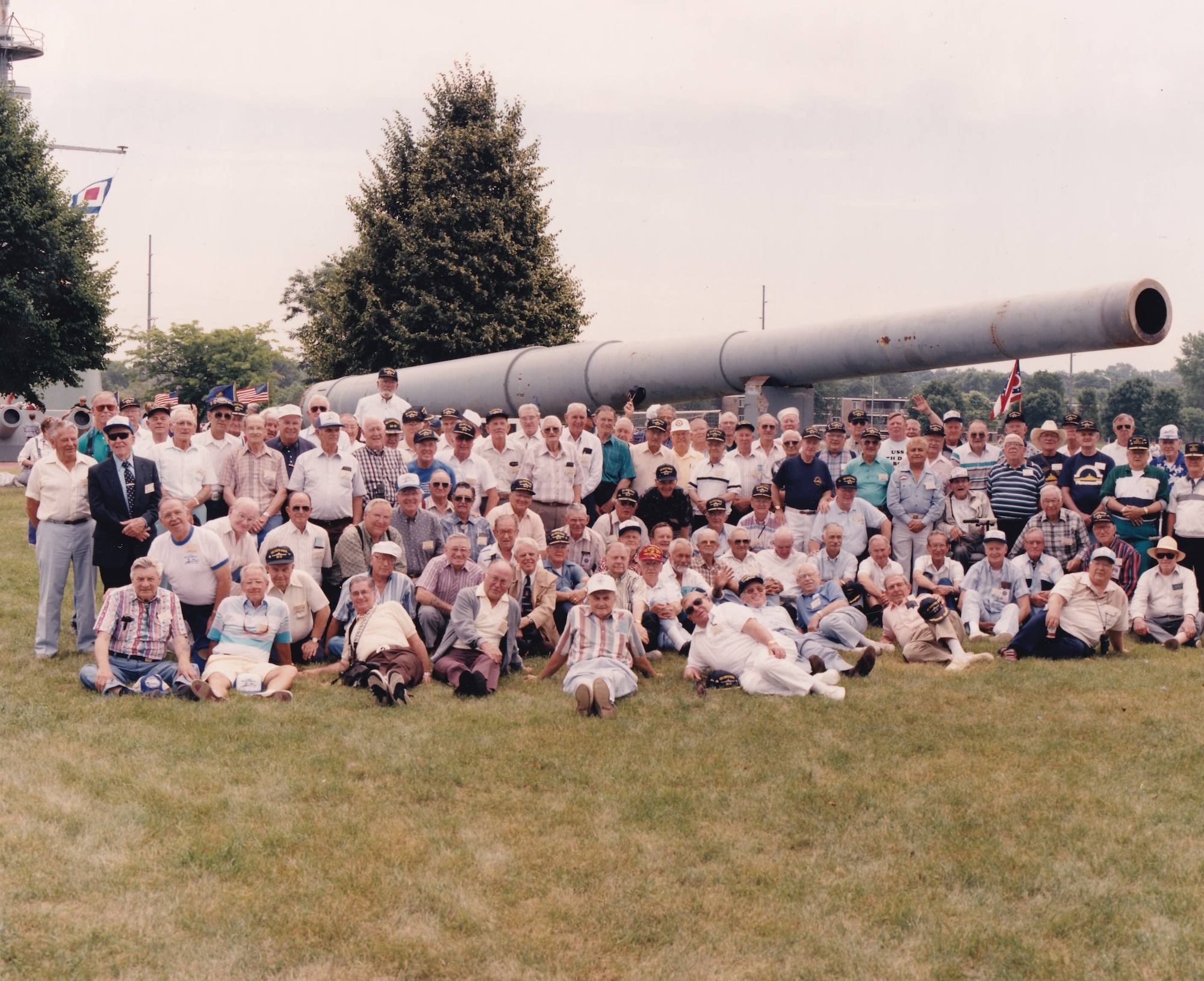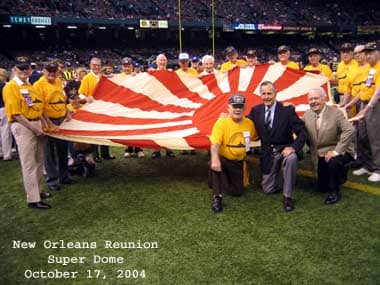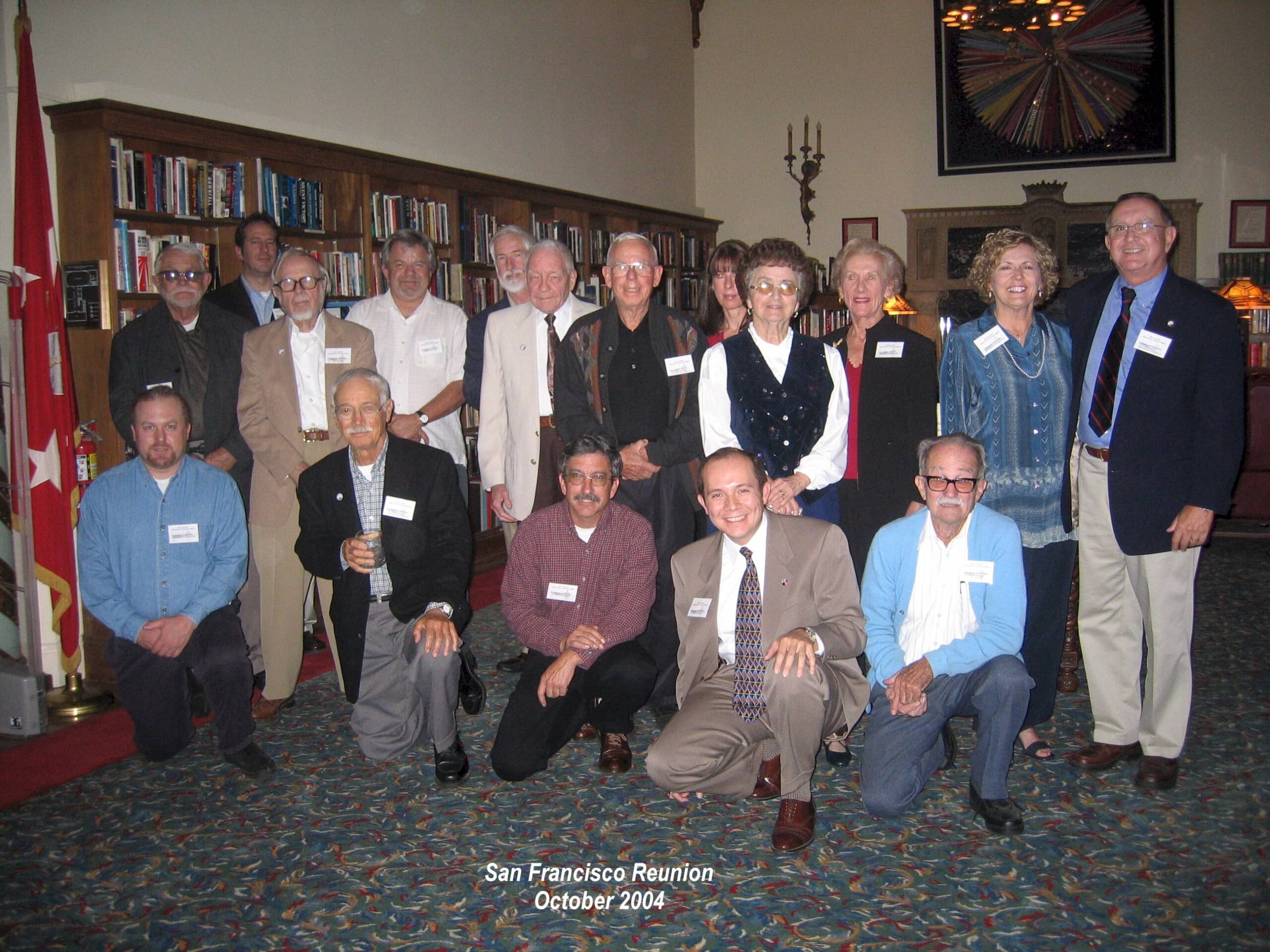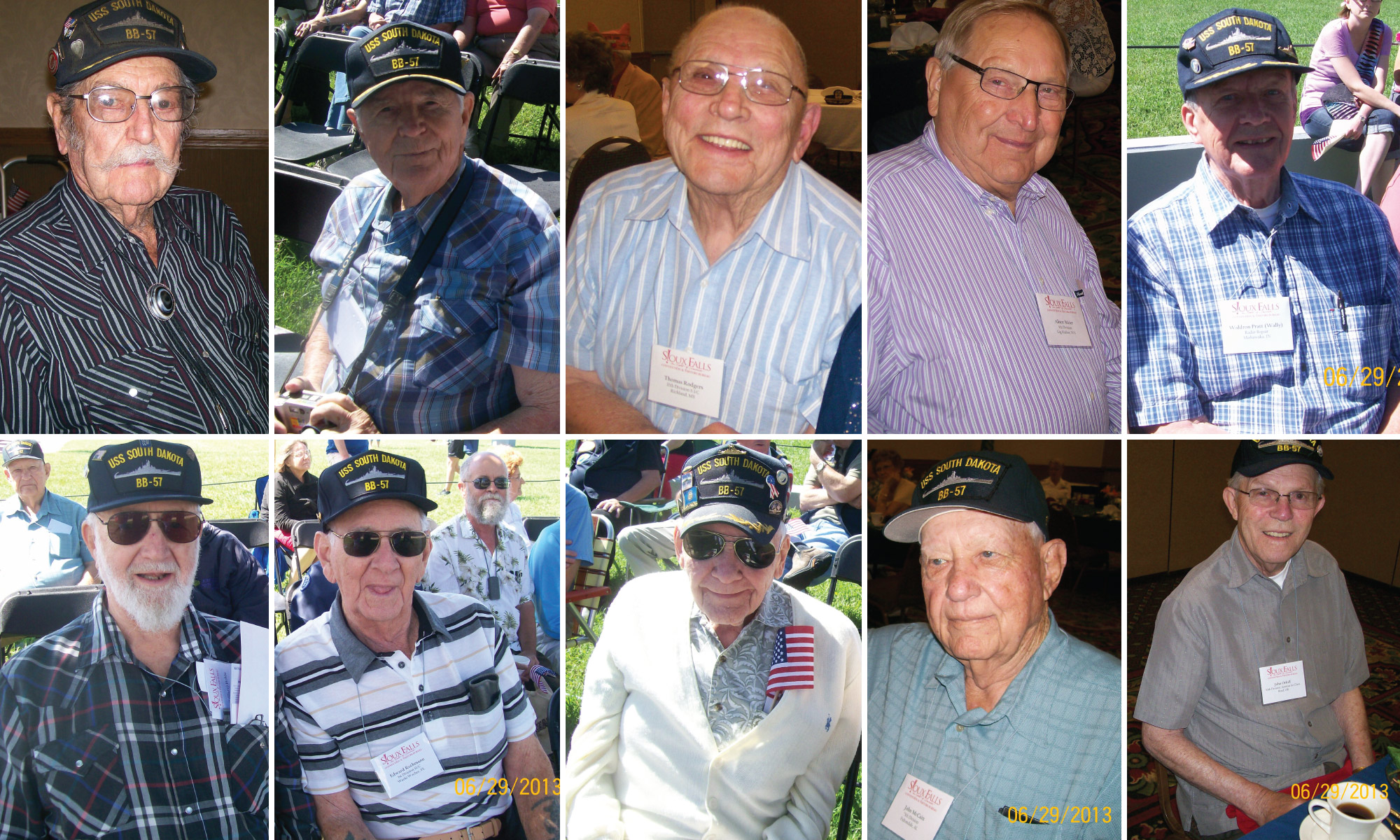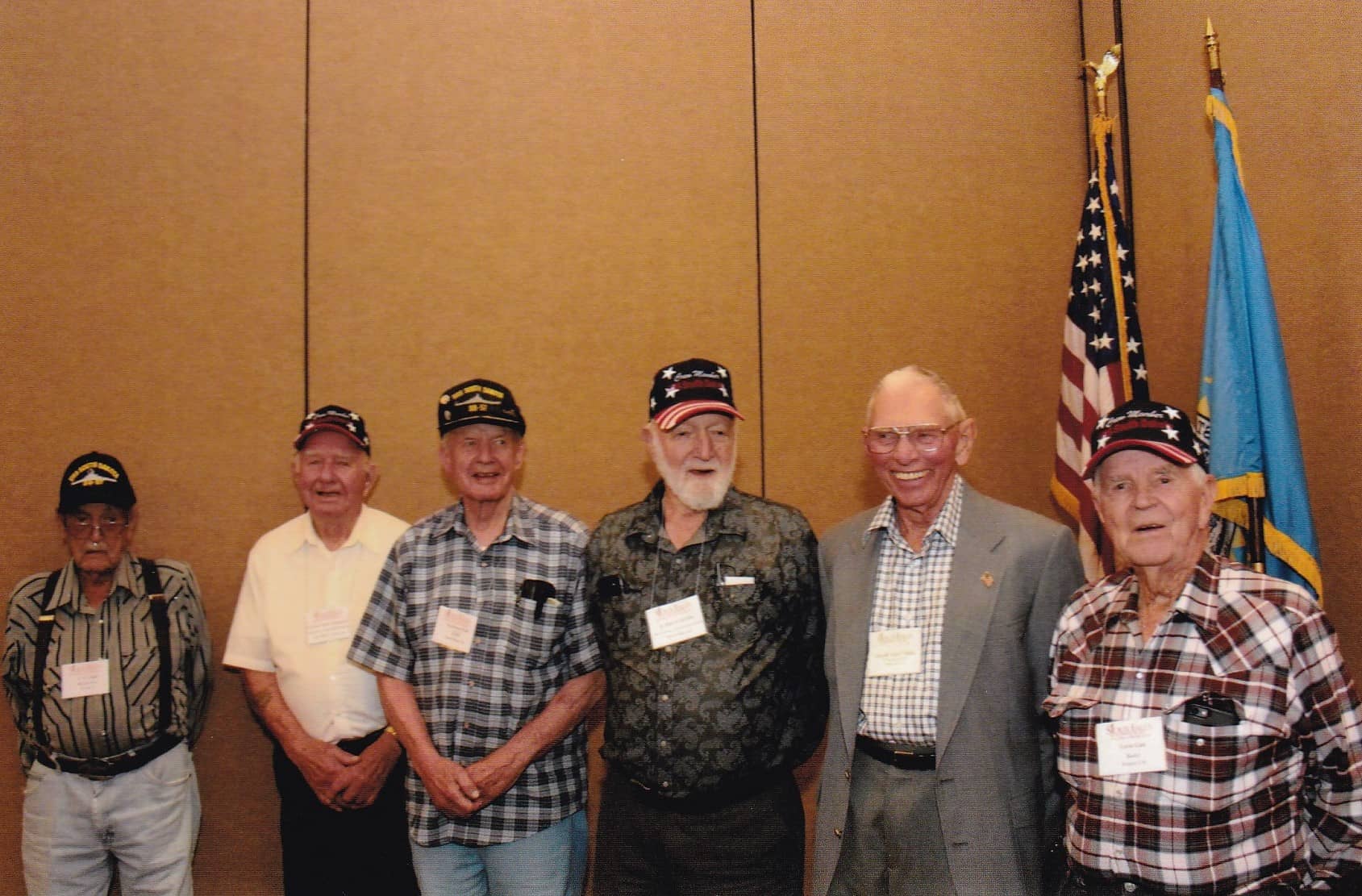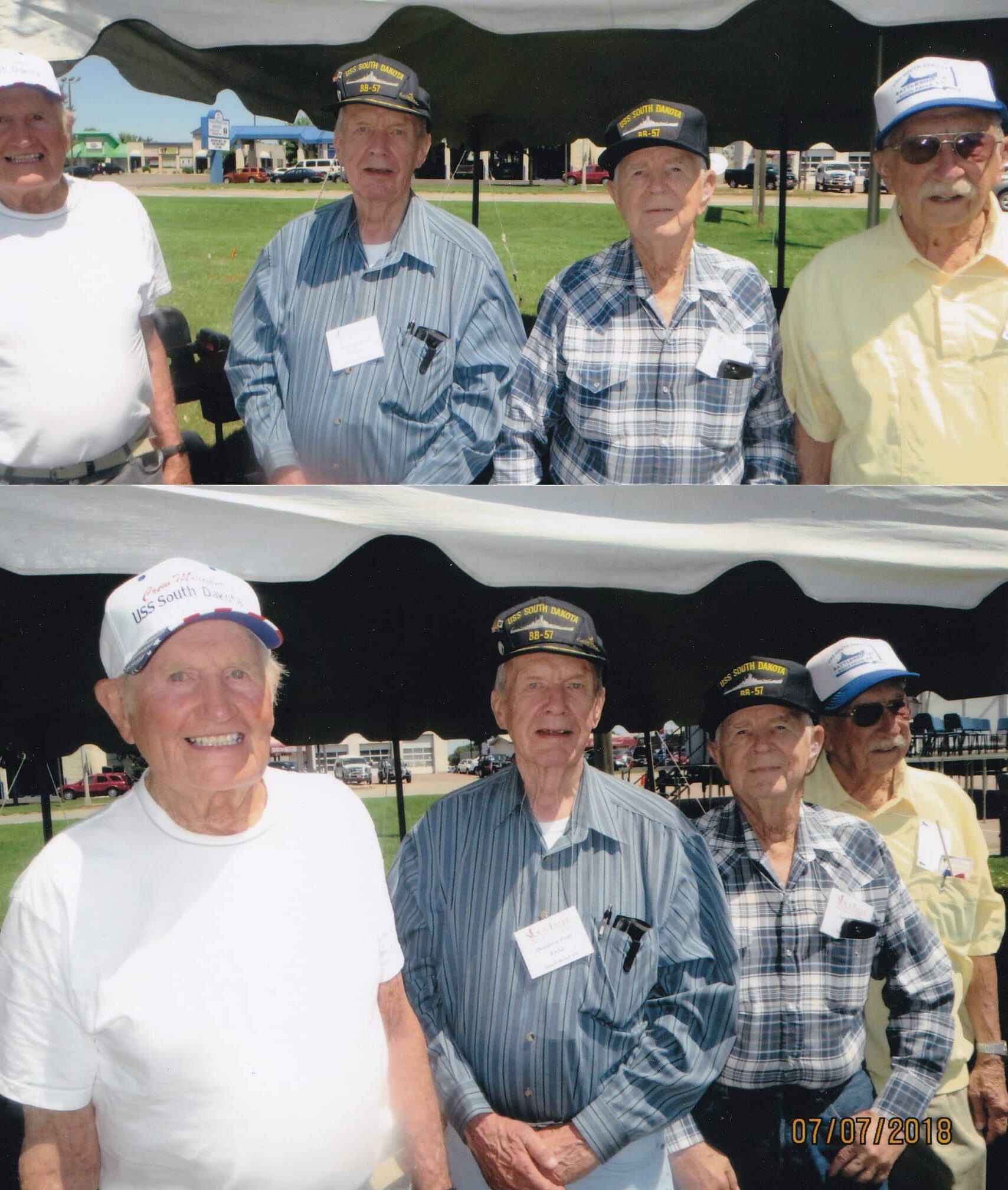History
Historic World War II Impact
Because of the World War II exploits against the Japanese in the South Pacific, this mighty battleship became a legend before she was a year old. She caught the fancy of the American people when her heroics were reported in newspapers under the titles of “Battleship X” and “Old Nameless”. “Old Incredible” would be an equally appropriate name for her.
Life aboard the South Dakota was filled with moments of terror followed by days of restless uncertainty. The men who called the South Dakota their home knew she could take a beating and still get them back to port. They also recognized that their captains were experienced sailors who knew how to handle the mammoth ship through the fiercest of battles and how to weather the mightiest of storms.
Most warships are built for an active career of 20 or 30 years. The USS South Dakota was in commission less than five. In that short lifetime she covered herself with more honors and glory than most ships realize in much longer periods of service. She truly was a legend before she was a year old.

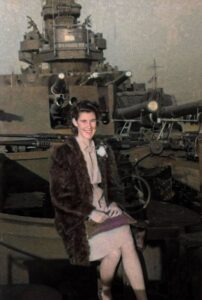
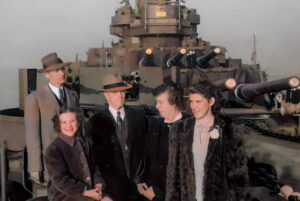
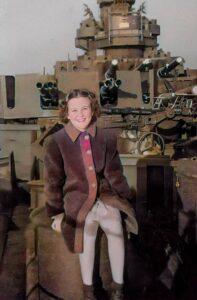
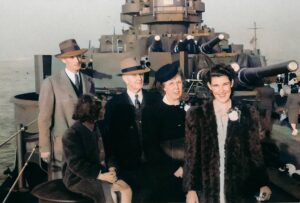

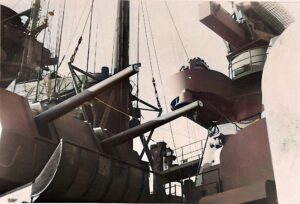
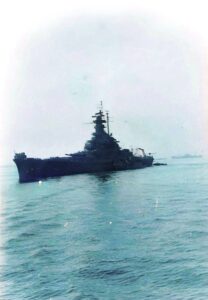
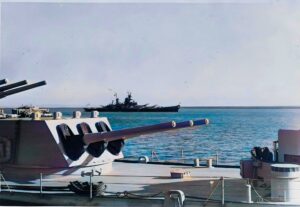

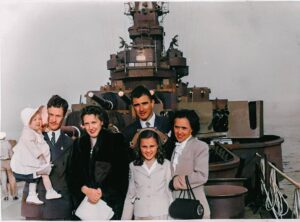
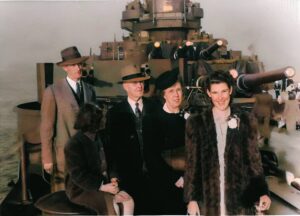
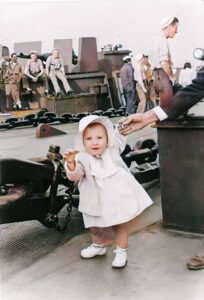
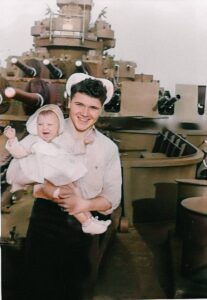


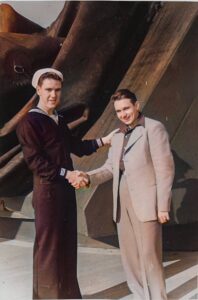
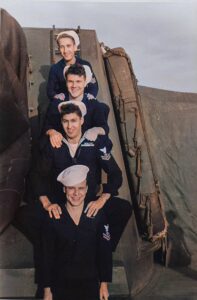
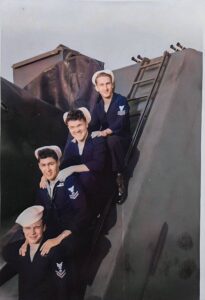
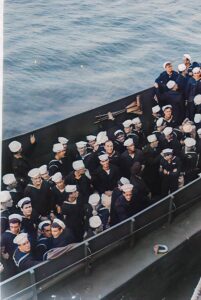
Trace the Life of BB-57
5 July 1939
New York Shipbuilding Corporation of Camden, New Jersey, laid the keel of the second USS SOUTH DAKOTA (BB-57). This would be the lead ship in the South Dakota class of battleships.
7 June 1941
The ship was launched into the Delaware River, with Vera C. Bushfield, wife of Governor Harlan J. Bushfield of South Dakota, performing the christening honors.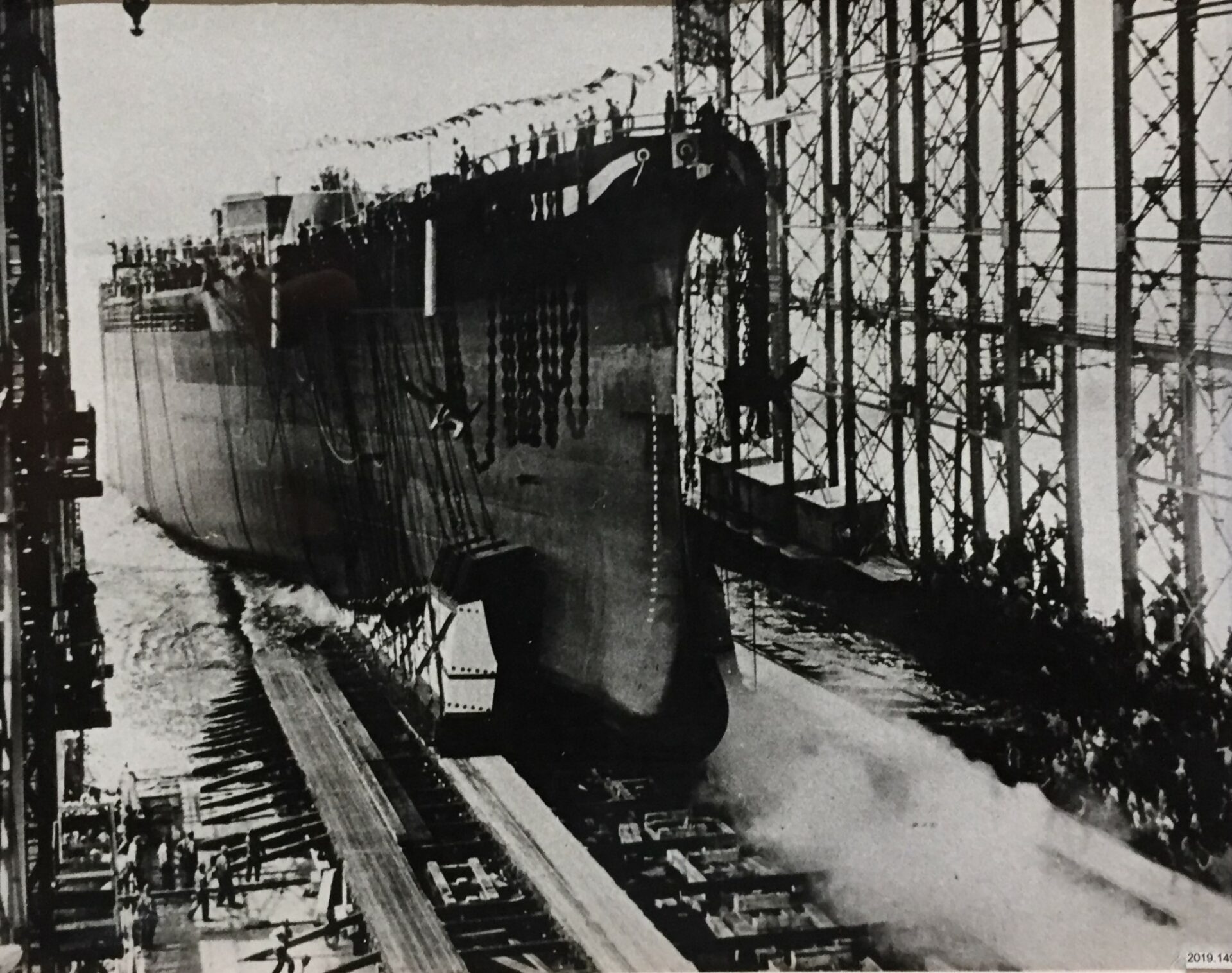
20 March 1942
USS SOUTH DAKOTA (BB 57) was commissioned into active service in the U.S. Navy, with Captain Thomas L. Gatch in command. The Commandant, Fourth Naval District placed the ship in commission at the Philadelphia Navy Yard in Pennsylvania. The Washington High School band from Sioux Falls, South Dakota, played “Anchors Aweigh” and the “Star Spangled Banner” as the ship slid into the Delaware River.
2 May 1942
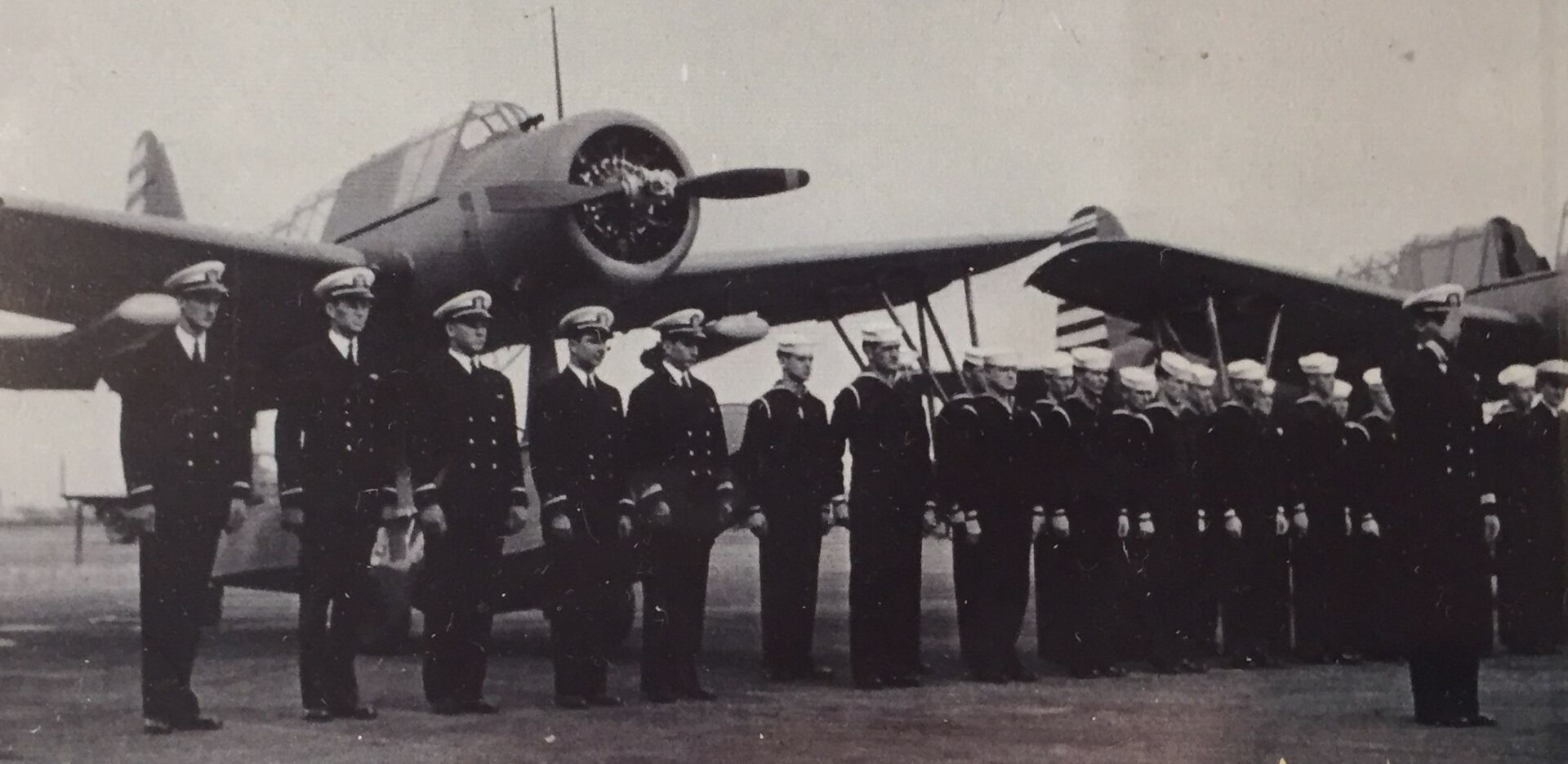
5 June 1942
USS SOUTH DAKOTA set sail for her shakedown, a day after proceeding down the Delaware River from Philadelphia. Following gunnery practice and aviation training in Chesapeake Bay, she was in the Atlantic Ocean, practicing high speed runs and tactical exercises on 19 July, when she collided with a large whale, which disappeared beneath the waves. The ship returned to the Philadelphia Navy Yard on 26 July at the completion of her shakedown.
15 August 1942
SOUTH DAKOTA sailed for the Pacific. She and her escorts transited the Panama Canal on 21 August and crossed the International Date Line on 2 September, reaching Tongatabu, Tonga Islands, on 4 September.
6 September 1942
SOUTH DAKOTA struck an uncharted coral pinnacle in Lahai Passage, causing extensive underwater hull damage. Six days later, she sailed for Pearl Harbor, Hawaii, for repairs.
13 October 1942
SOUTH DAKOTA left Pearl Harbor Navy Yard with four new quad-40-millimeter antiaircraft guns and 22 single 20-millimeter guns added. The Kingfishers contained a new installation of Identification Friend or Foe.
26 October 1942
During the Battle of Santa Cruz Islands, a 500-pound bomb exploded on top of Turret I, the battleship’s forward triple 16-inch mount. A bomb fragment wounded Captain Gatch, who was out on the catwalk in front of the bridge, cutting a gash in his jugular vein and knocking him unconscious. Gunner’s Mate 1st Class Herbert Chatelain, the ship’s first battle fatality, was killed by a bomb fragment. SOUTH DAKOTA provided antiaircraft fire that contributed to the survival of USS Enterprise, while USS Hornet was the fourth U.S. fleet carrier lost during 1942. The enemy carriers survived, and Japan scored a tactical victory, but the failure of the simultaneous land offensive on Guadalcanal prevented exploitation of that triumph.
14-15 November 1942
One of SOUTH DAKOTA’S gun crewmen, and the youngest sailor of World War II, 12-year-old Calvin Graham from Texas, was severely wounded when struck by Japanese shellfire fragments. He continued to man his gun and help pull fellow crewmen to safety. He was awarded the Bronze Star and Purple Heart, which were taken away when the Navy voided his underage enlistment. His story was told in a 1988 made-for-TV film, Too Young the Hero, starring Ricky Schroder. The Navy eventually restored his decorations, some posthumously.
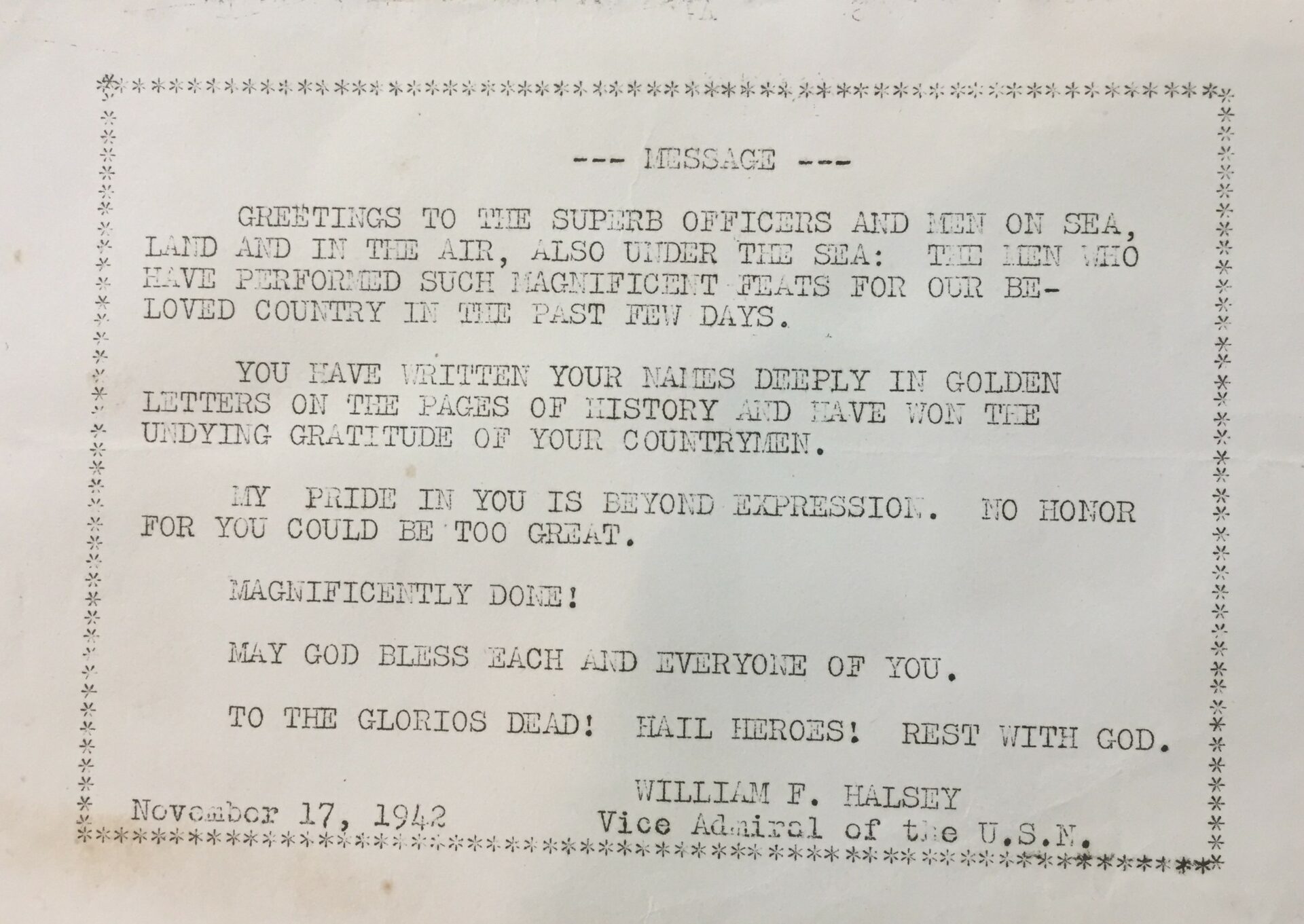
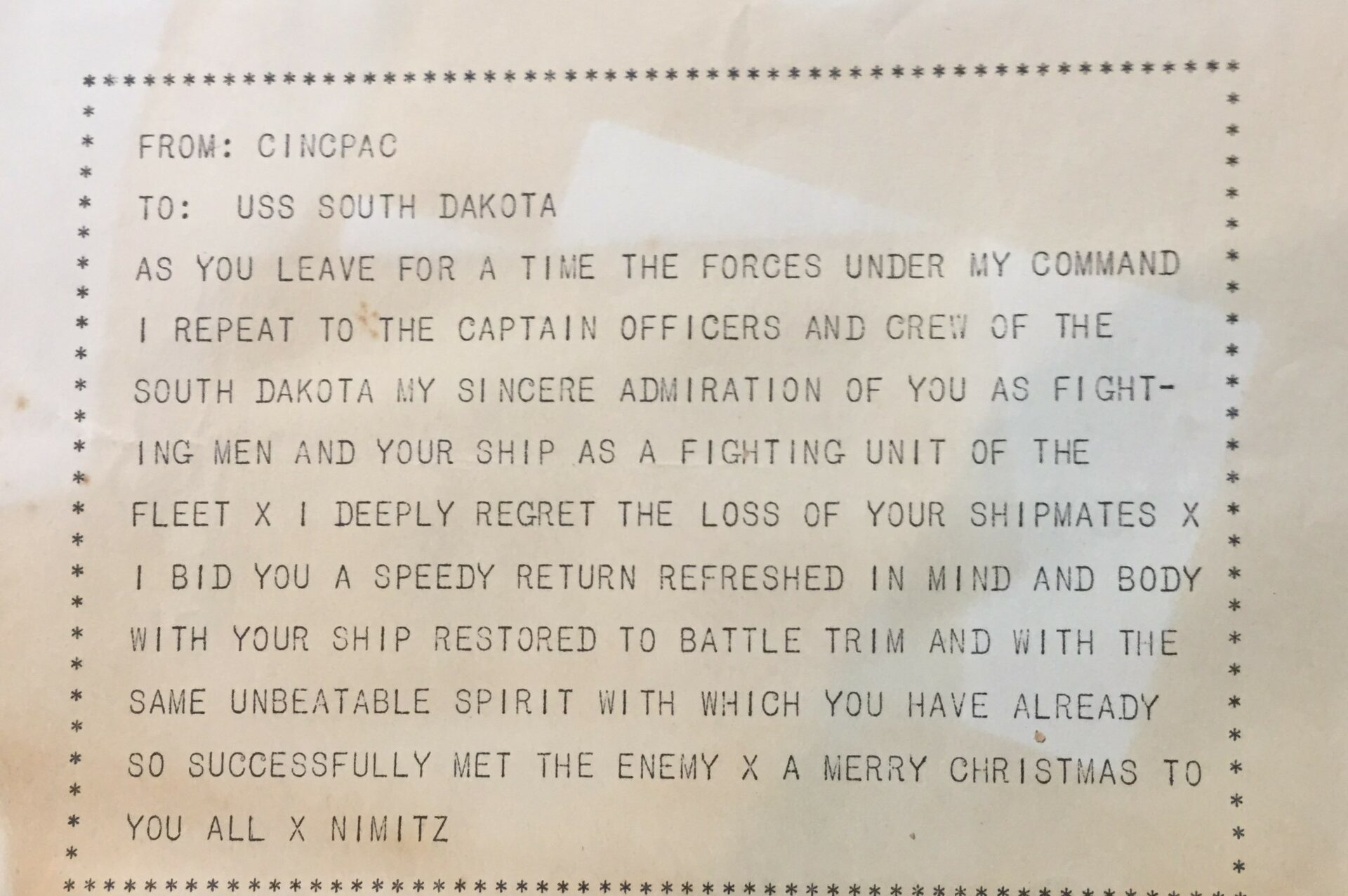
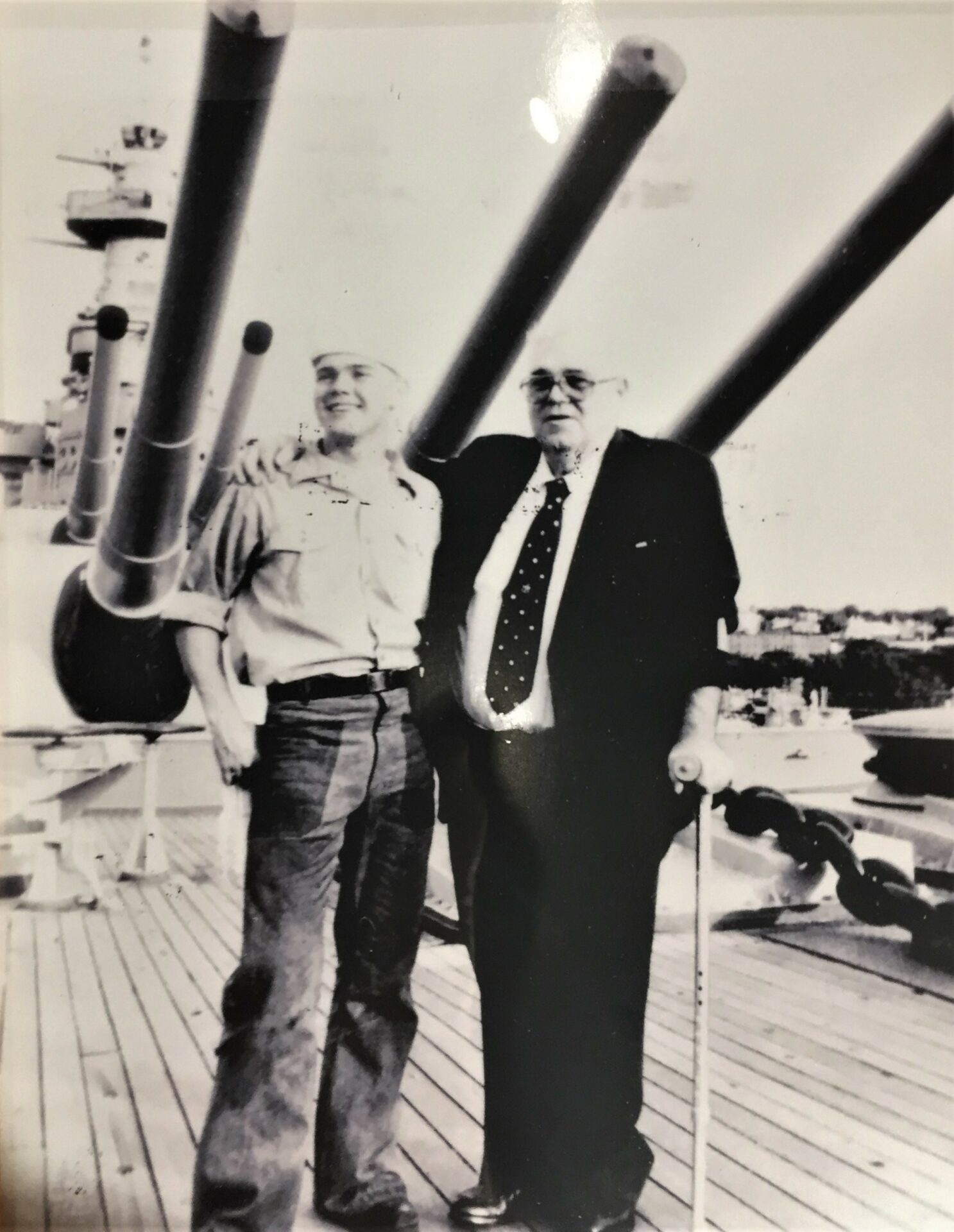
18 December 1942
Having passed through the Panama Canal on 11 December, SOUTH DAKOTA arrived at the Brooklyn Navy Yard, New York, for an overhaul and completion of repairs.
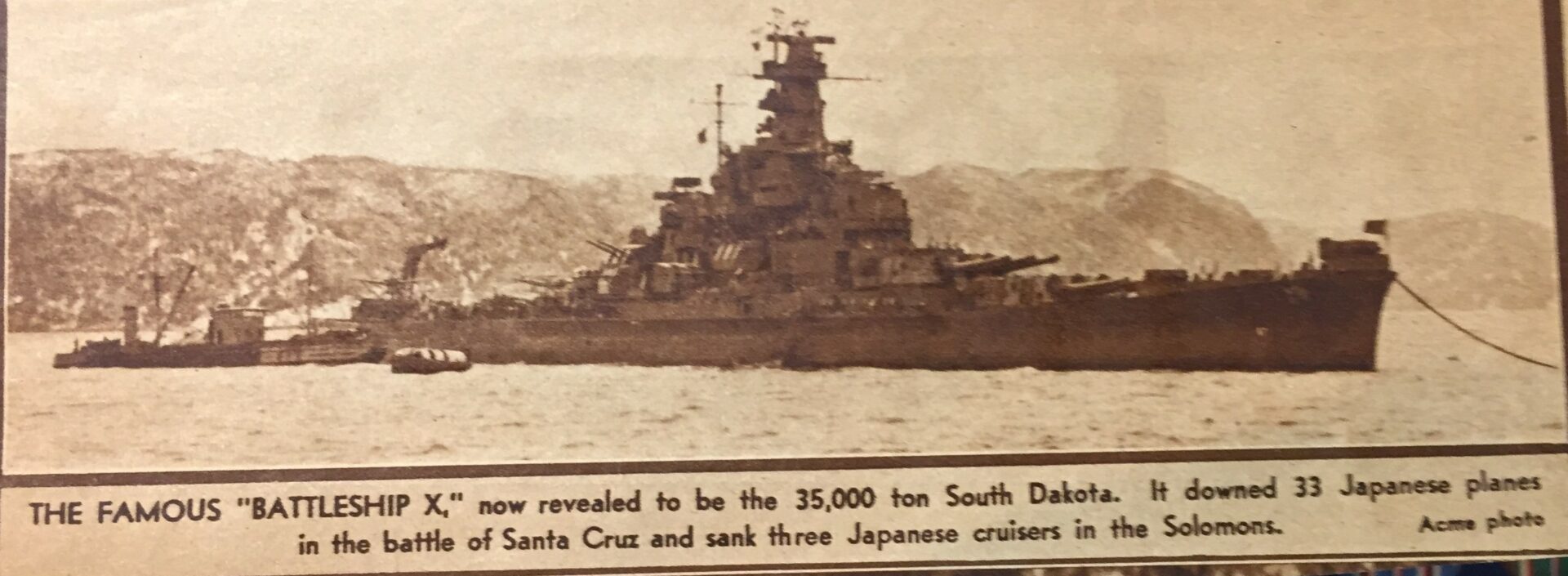
25 February 1943
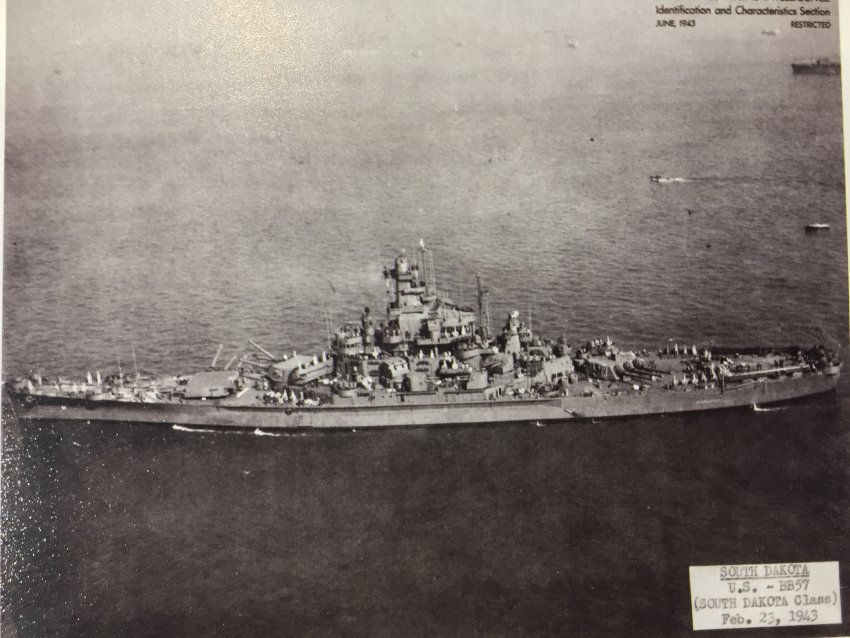
12 May 1943
SOUTH DAKOTA sailed from Argentia, Newfoundland. The ships of Task Force 61, which included USS ALABAMA (BB-60), rendezvoused at Scapa Flow on 19 May. They operated with the British Home Fleet in the North Atlantic, Arctic Circle, and North Sea, off Greenland, Iceland, and Norway.
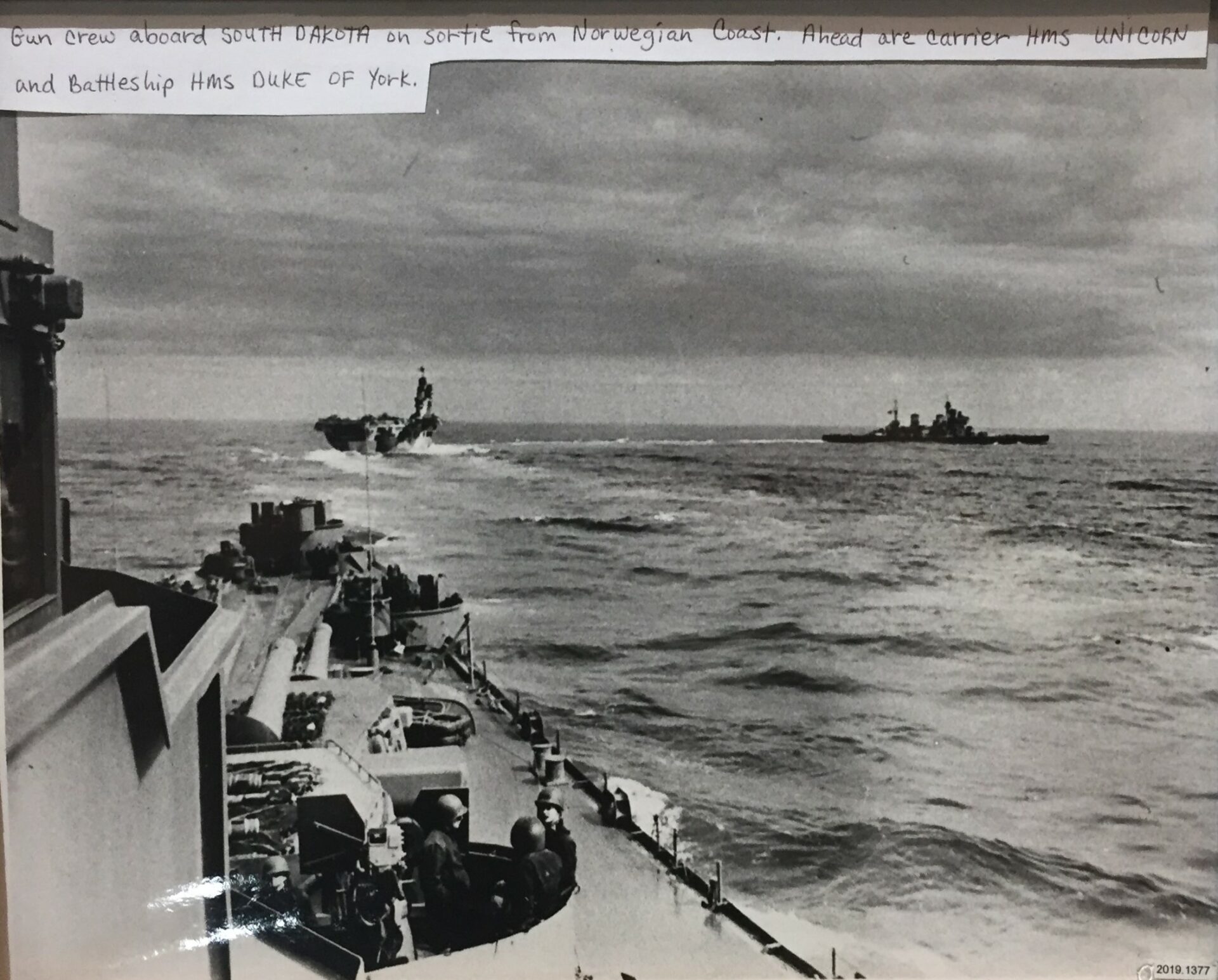
1 August 1943
SOUTH DAKOTA arrived at Naval Station Norfolk, leaving again on 21 August to transit the Panama Canal and arrive at Havannah Harbor, Efaté, New Hebrides (Vanuatu), on 14 September. Captain Allan Smith relieved Captain McCormick as Commanding Officer on 20 September.
19 November 1943
SOUTH DAKOTA protected the aircraft carriers providing air support for the amphibious landings on Makin and Tarawa in the Gilbert Islands.
8 December 1943
SOUTH DAKOTA’s first shore bombardment smashed airfields and defenses on Nauru Island, using 135 rounds of 16-inch high capacity shells and 482 rounds of 5-inch antiaircraft common shells.
30 January 1944
During the bombardment of Roi and Namur Islands, Kwajelein Atoll, the battleships SOUTH DAKOTA, ALABAMA, and NORTH CAROLINA made multiple runs against Japanese pill boxes and defensive positions. Marines and soldiers landed on Kwajalein and Majuro the next day.
16 February 1944
Covering operations for liberating the Marshall Islands included a strike on the Japanese naval anchorage on Truk Atoll in the Caroline Islands. SOUTH DAKOTA, as part of the Truk Striking Force, protected the aircraft carriers during their airstrikes.
22 February 1944
SOUTH DAKOTA supported airstrikes against the Japanese garrisons on Guam, Saipan, and Tinian in the Marianas Islands.
30 March 1944
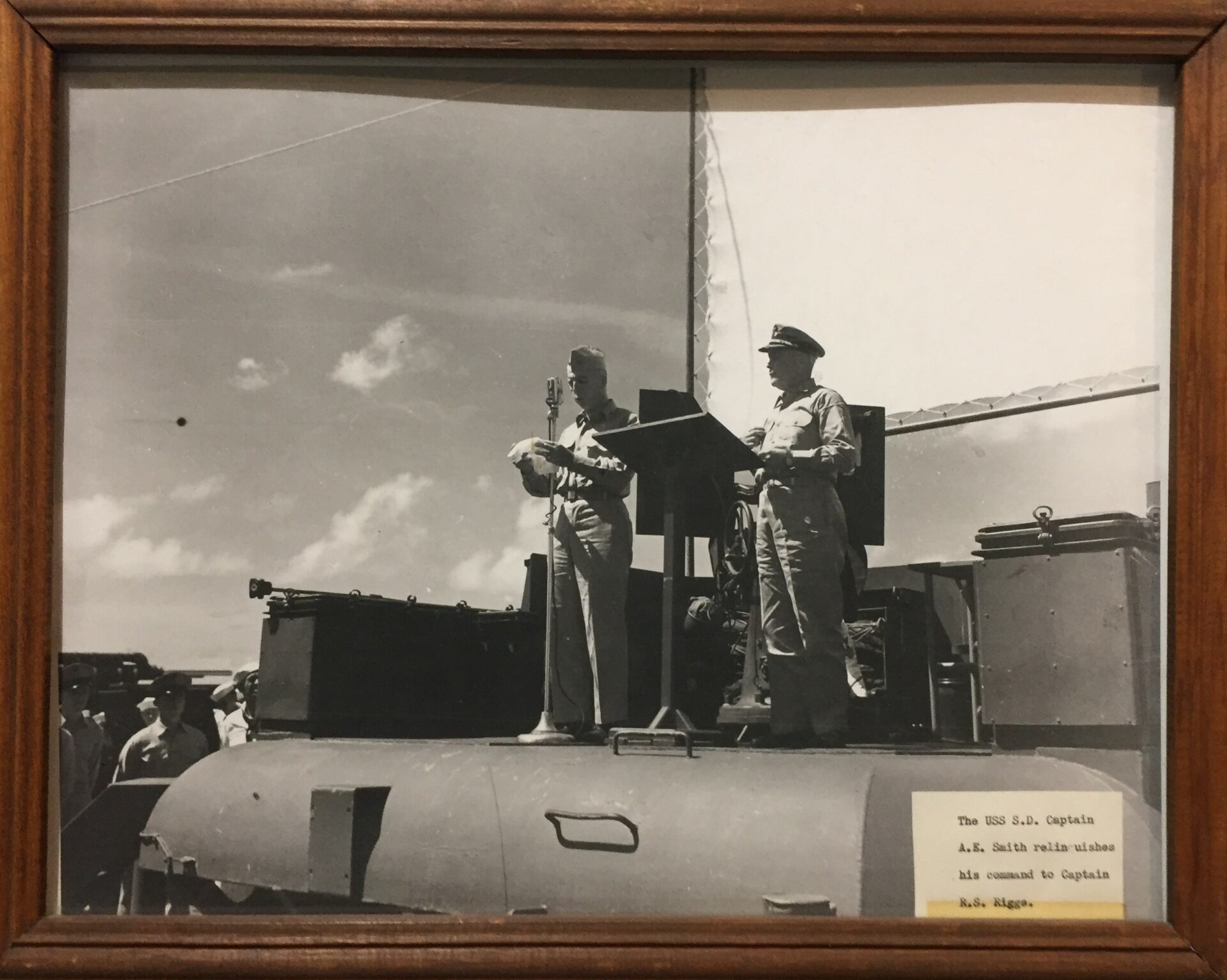
22 April 1944
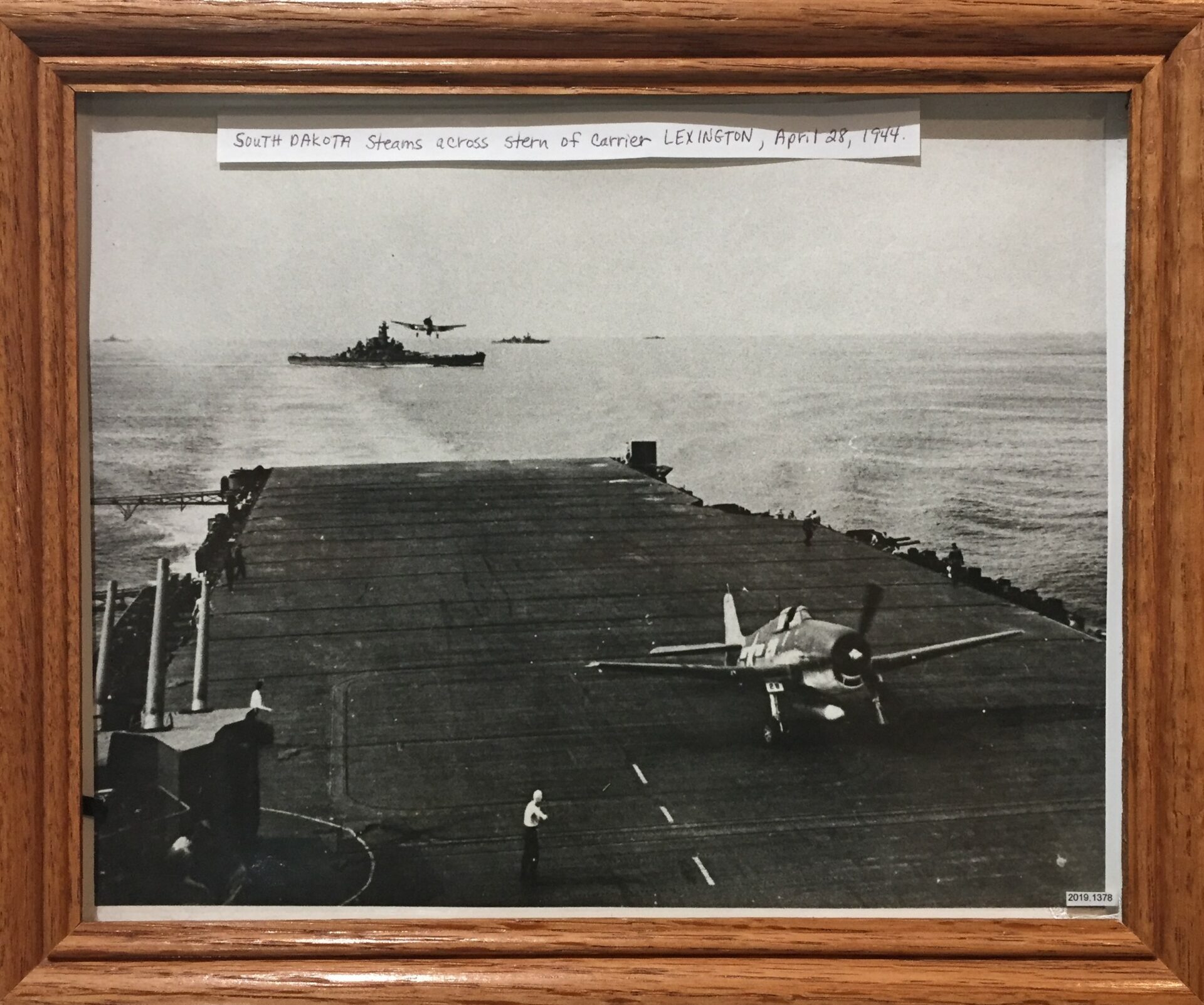
1 May 1944
The main batteries of battleships ALABAMA, SOUTH DAKOTA, IOWA, and NEW JERSEY bombarded airstrips, facilities, wharf areas, and seaplane base on Ponape in the Caroline Islands.
12 June 1944
To support the amphibious landings on Saipan and Tinian in the Marianas, while the carriers launched their second day of strikes, battleships ALABAMA, INDIANA, IOWA, NEW JERSEY, NORTH CAROLINA, SOUTH DAKOTA, and WASHINGTON bombarded Saipan and Tinian.
19 June 1944
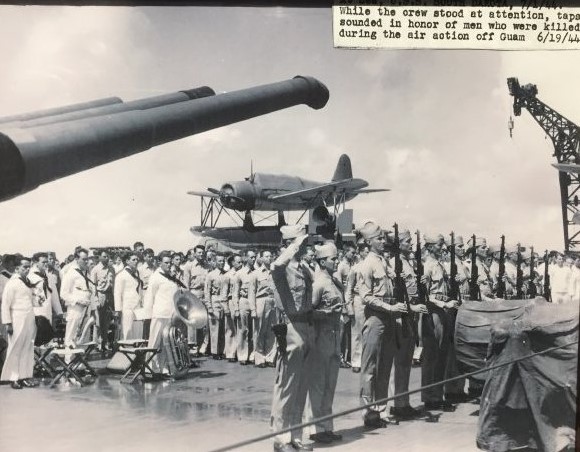
21 June 1944
SOUTH DAKOTA supported airstrikes against the Japanese garrisons on Pagan in the Marianas Islands.
2 July 1944
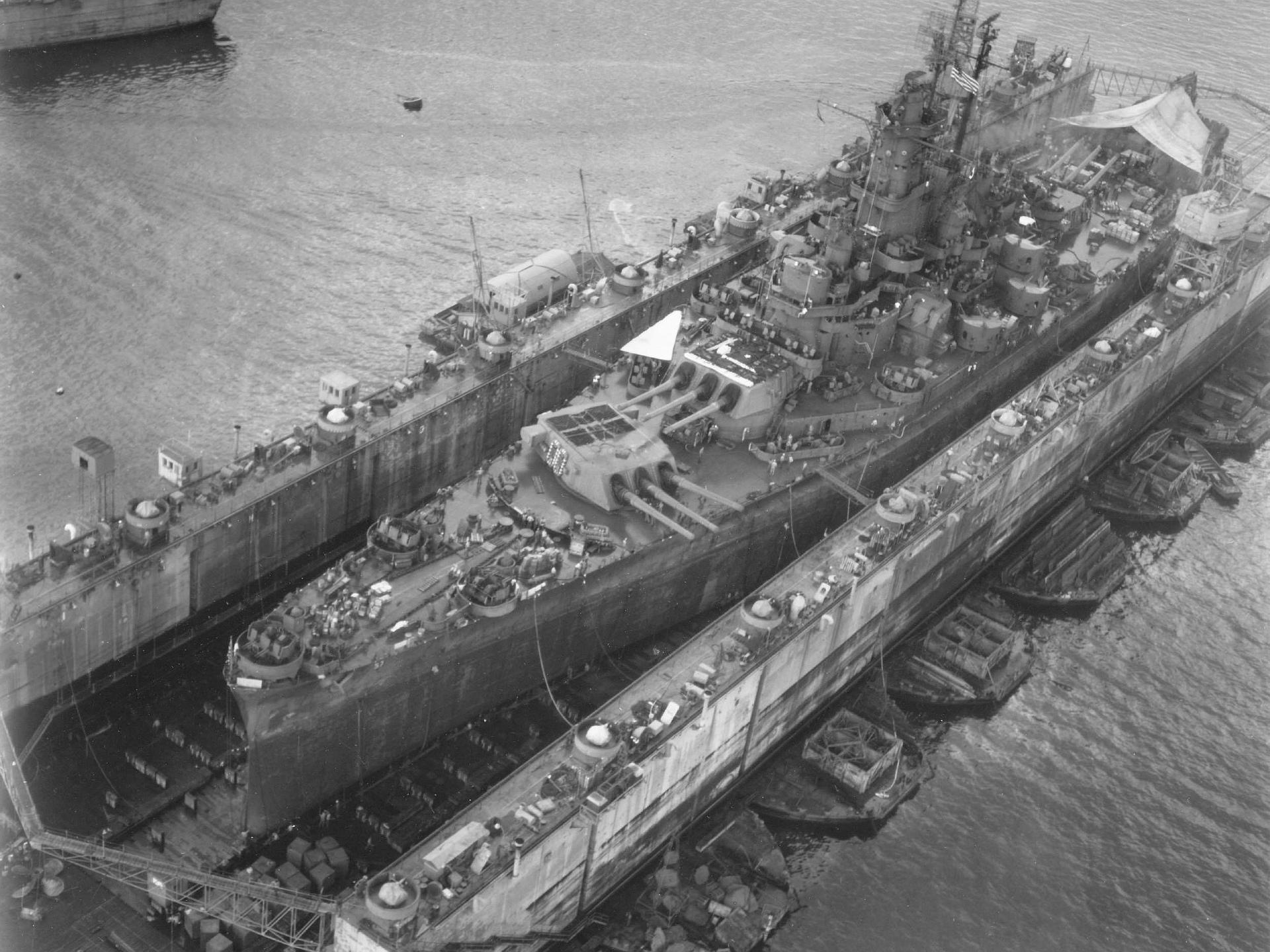
30 September 1944
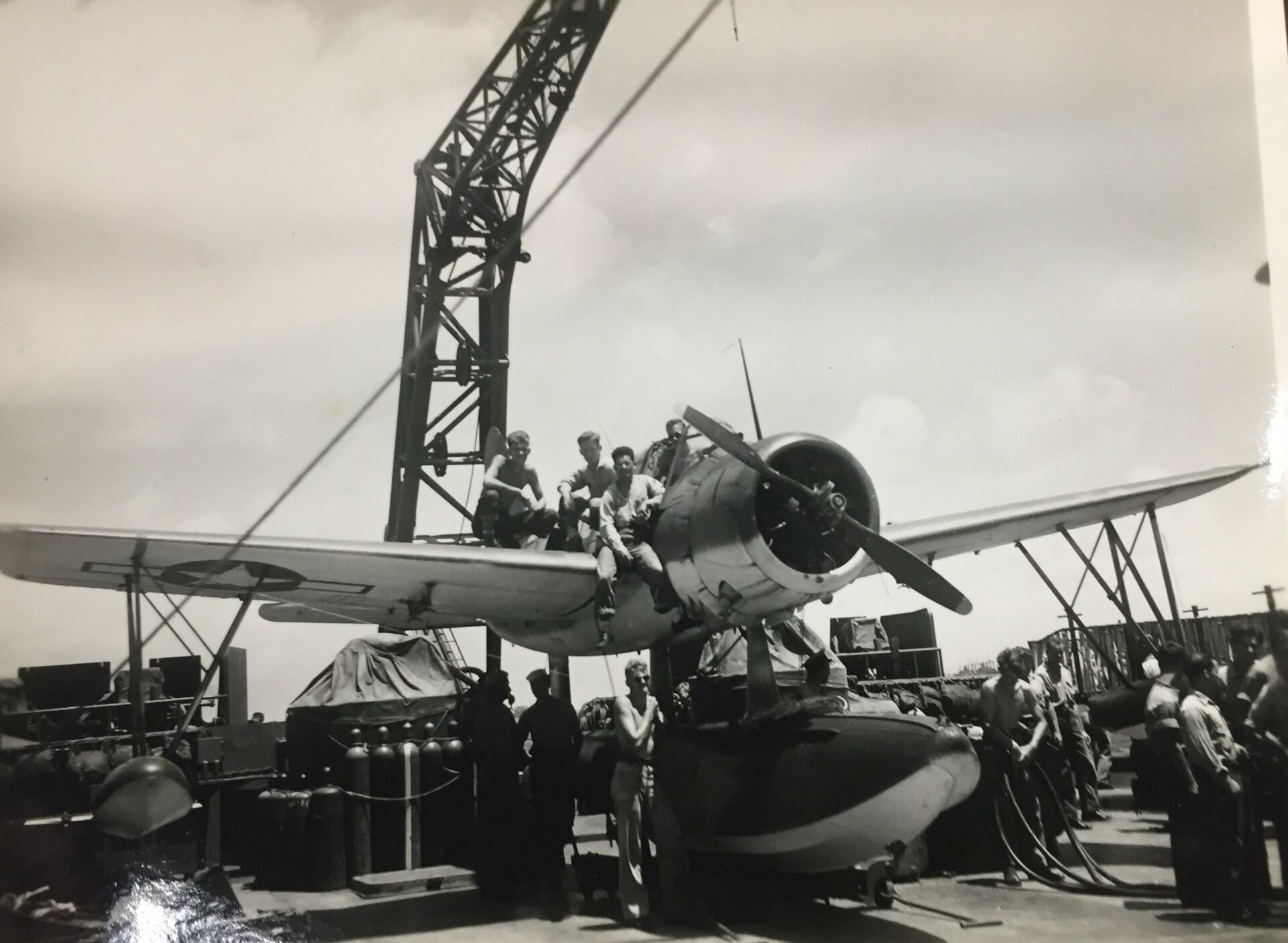
25 October 1944
SOUTH DAKOTA became part of the task force sent northward to attack Ozawa’s Northern Force. When this was discovered to be a decoy to lure the carriers away from San Bernardino Strait and the invasion beaches, SOUTH DAKOTA steamed with the other ships back to the San Bernardino Strait, arriving 27 October.
5 November 1944
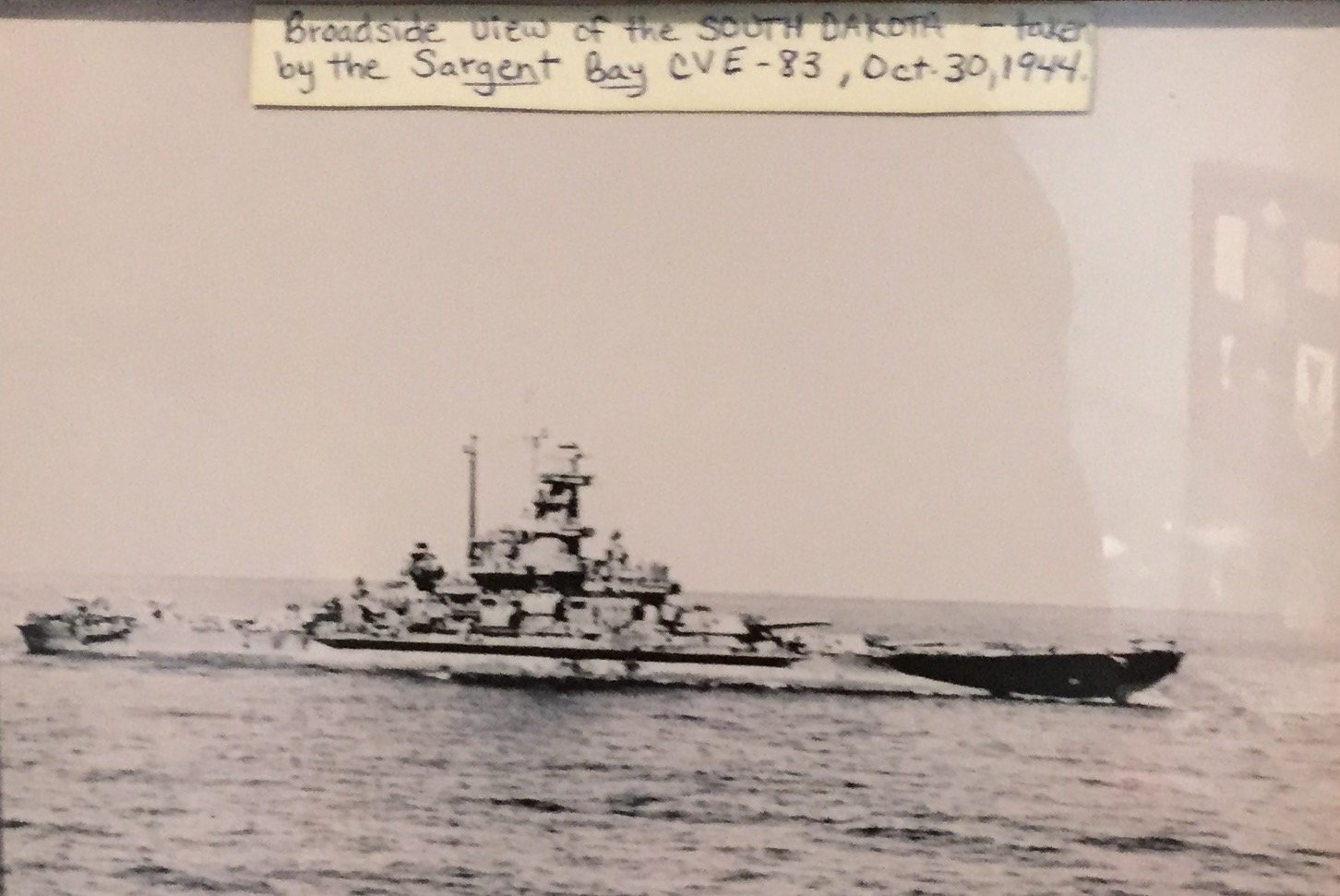
18 December 1944
A typhoon reached its full fury while SOUTH DAKOTA passed within 20 miles of the center of the storm. At one point, water poured over the fantail when a heavy swell swept over the ship. The typhoon killed at least 790 men in the task force, sank three ships, and seriously damaged 21 others.
30 December 1944
SOUTH DAKOTA, attached to the Third Fleet fast carrier force, sailed from Ulithi. During the next three weeks, she supported airstrikes on Cam Rahn Bay and French Indochina, Taiwan, Hong Kong, Canton, Hainan Island, Naru, Amoy, and Okinawa.
16-17 February 1945
SOUTH DAKOTA supported airstrikes on Tokyo and nearby cities, as carrier planes bombed Japanese aircraft factories, airfields, and ships around the Tokyo area.
19 February 1945
When the invasion of Iwo Jima began, the task group gave direct air support to U.S. Marines fighting ashore, as well as continuing airstrikes on Tokyo and nearby cities.
11 March 1945
The Japanese launched a surprise attack against the U.S. fleet anchorage at Ulithi, with kamikazes flying a one-way mission at the limit of their range. Aircraft carrier USS RANDOLPH, riding at anchor near SOUTH DAKOTA, who had returned to Ulithi on 5 March, received heavy damage.
14 March 1945
SOUTH DAKOTA deployed with a task force from Ulithi to support the invasion of Okinawa in the Ryūkyū Islands. During the following week, she supported the carriers conducting airstrikes on Kyushu, Shikoko, Kobe, Kure. and Osaka.
24 March 1945
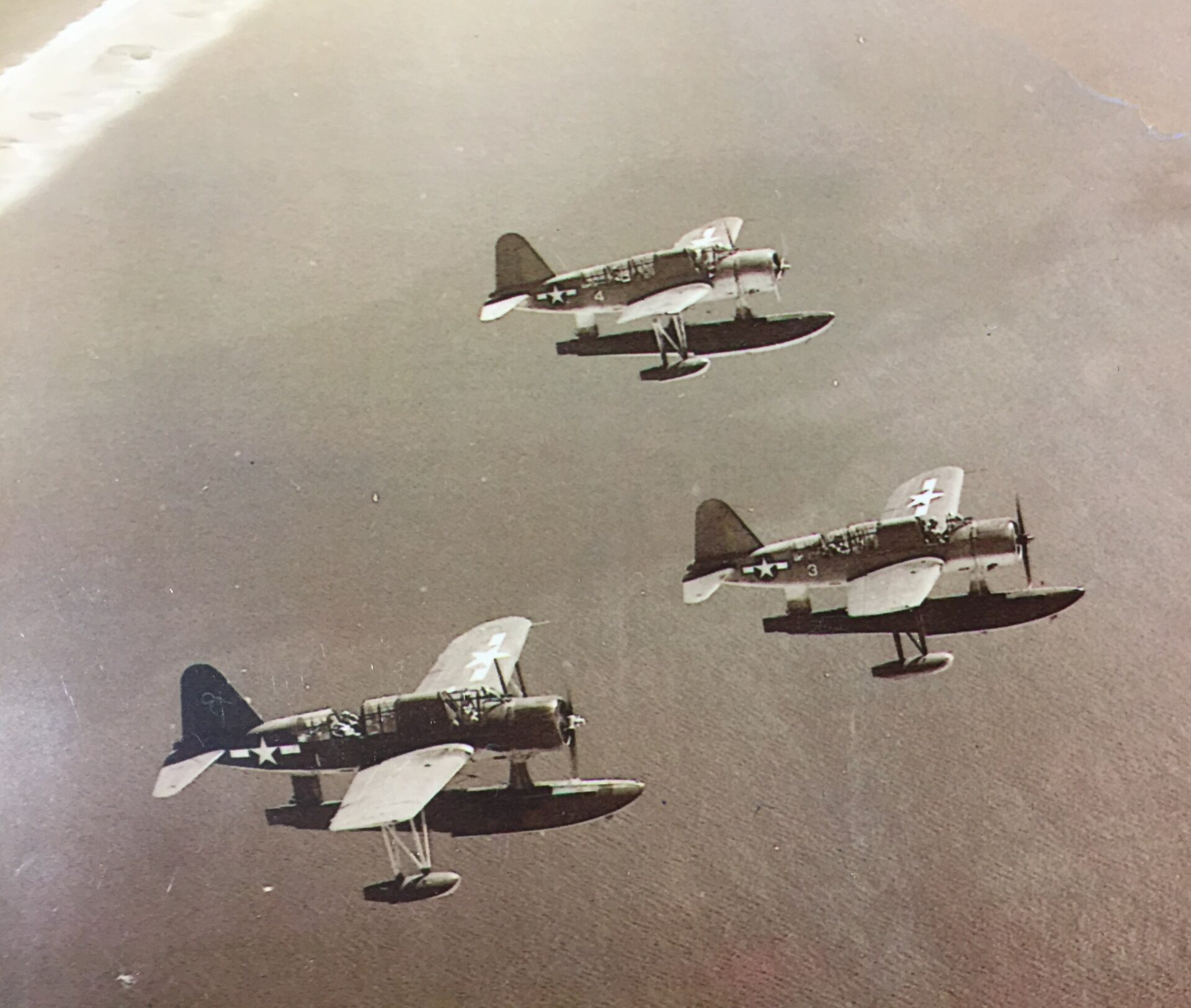
29 March 1945
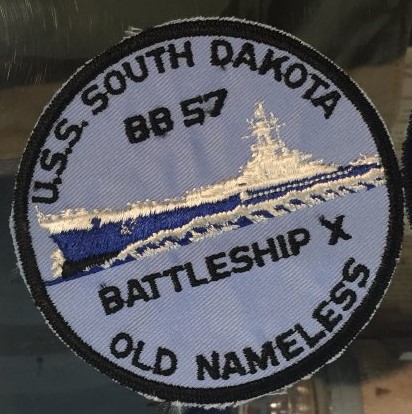
6 May 1945
A working party was hoisting ammunition aboard SOUTH DAKOTA when a tank of 16-inch H.C. powder exploded as the men passed it into a magazine. The explosion and fire set off four other tanks, killing 11 men and injuring 24 others. A memorial service was held that evening. SOUTH DAKOTA continued in action as her crew repaired the damage.
11 May 1945
SOUTH DAKOTA received orders to sail to Guam for inspection and repairs of her shafts and strut bearings to determine the cause of excessive vibration at high speeds. The ship had been steaming for 59 days and could not carry out routine boiler maintenance or correct engineering problems.
14-29 May 1945
Repairs were completed at Apra, Guam.
1 June 1945
SOUTH DAKOTA reached Leyte Gulf, Philippine Islands, where she remained for a month to support the invasion.
10 July 1945
The carriers began strikes on airfields in the Tōkyō plains area, in preparation for attacking the homeland. SOUTH DAKOTA supported airstrikes on Northern Honshu and Kokkaido.
14 July 1945
The bombardment group of INDIANA, MASSACHUSETTS, and SOUTH DAKOTA initiated the first gunfire attack on the Japanese home islands by heavy warships during WWII. SOUTH DAKOTA was first to open fire. SN1c Glenn Arnold in the main battery plot pressed the trigger that sent the first 16-inch salvo onto the Kamaishi Steel Works at Kamaishi, Honshū. For the next month, the battleships supported carrier airstrikes on Northern Honshu and Hokkaido, including Yokusuka Naval Base and cities in the Tokyo area.
29 July 1945
SOUTH DAKOTA and other battleships conducted night bombardment of Hamamatsu industrial targets on Honshu island.
9-10 August 1945
SOUTH DAKOTA bombarded Kimaishi on Honshu and supported carrier raids to bomb Honshū-Hokkaido area.
15 August 1945
Carriers were launching strikes against the Tokyo plains when word arrived that the Japanese accepted the terms of unconditional surrender. SOUTH DAKOTA received orders at 0638 to cease firing. On 17 August, Captain Emmet Forrestel assumed command of the battleship.
27 August 1945
Admiral Halsey led ships of the Third Fleet into Sagami Wan, outside the entrance to Tokyo Bay. SOUTH DAKOTA crewmen noted that many Japanese troops and civilians stopped to watch the fleet enter the bay, while others continued with their daily tasks.
29 August 1945
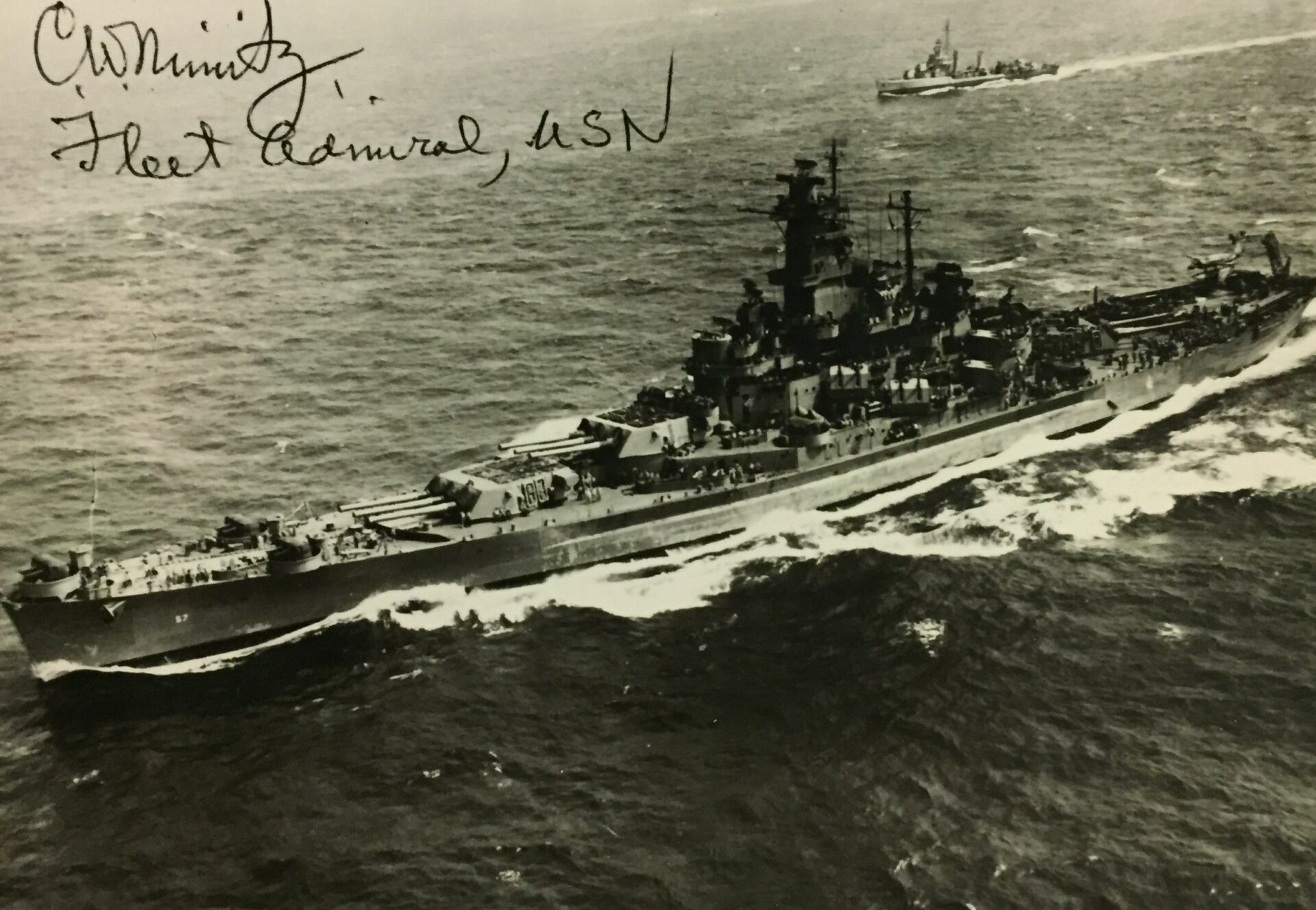
2 September 1945
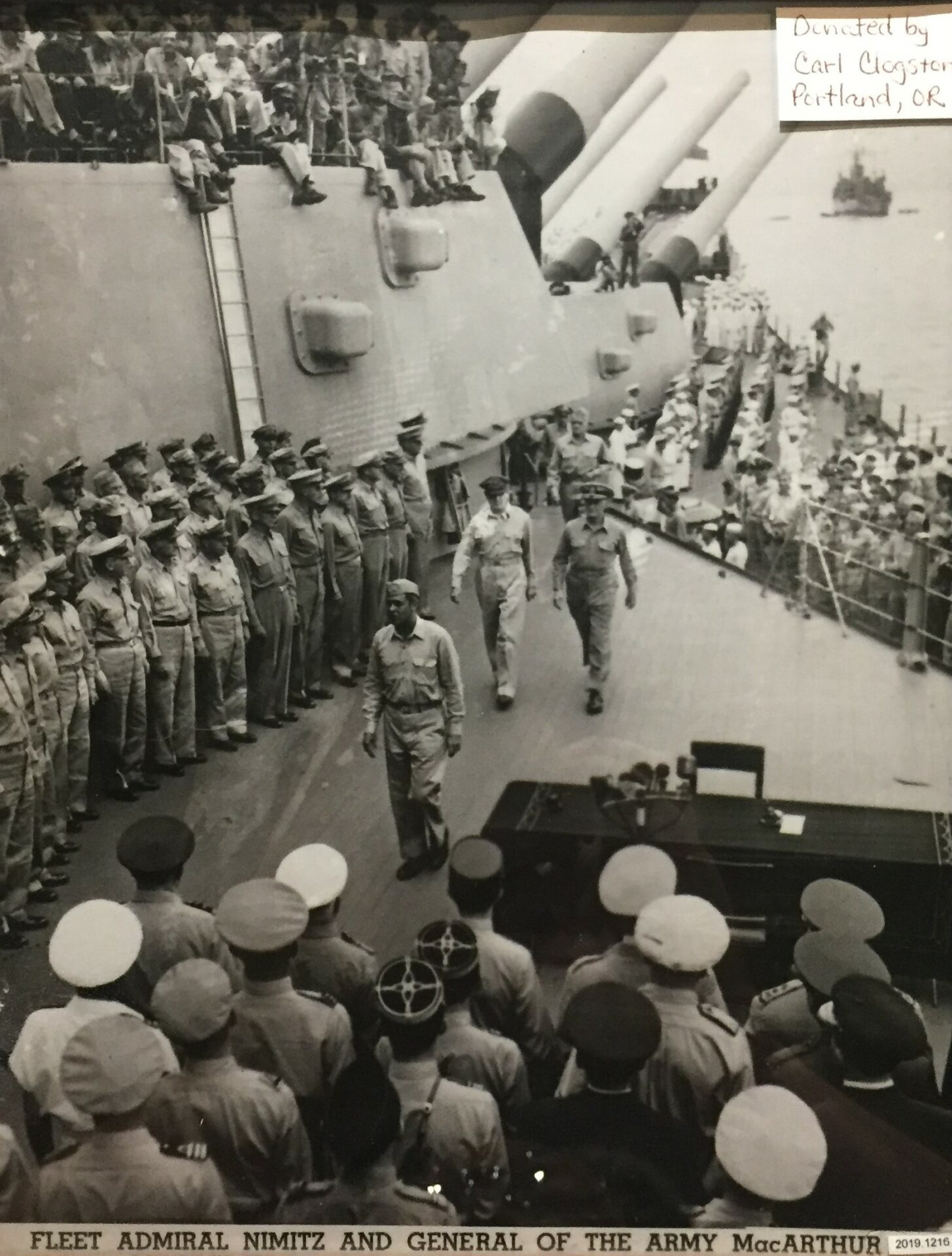
5 September 1945
Admiral Halsey boarded SOUTH DAKOTA, which became the Third Fleet flagship, from which he directed the naval phase of the occupation of the Japanese home islands.
20 September 1945
SOUTH DAKOTA departed Japan for Buckner Bay, Okinawa, to embark 600 men returning home, and then sailed to Pearl Harbor.
15 October 1945
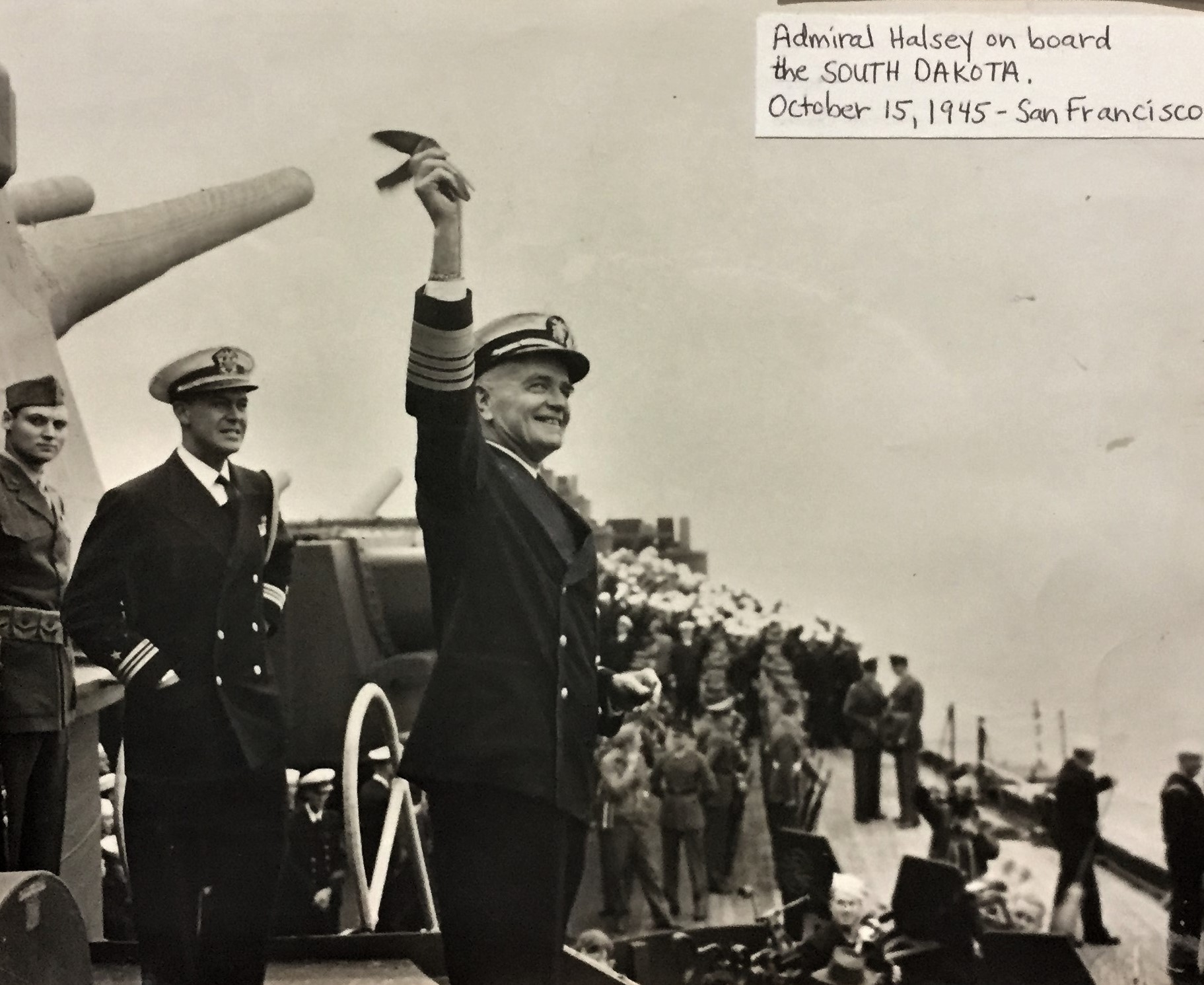
29 October 1945
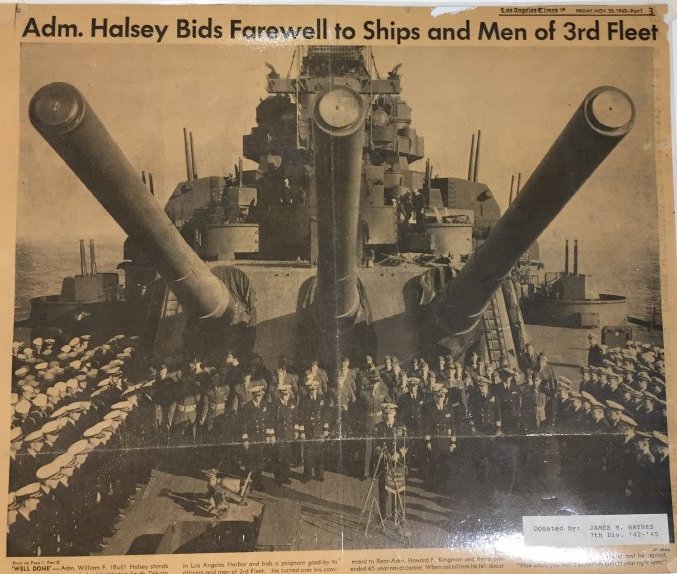
3 January 1946
SOUTH DAKOTA left California, transited through the Panama Canal, and arrived at the Philadelphia Naval Shipyard on 20 January.
31 January 1947
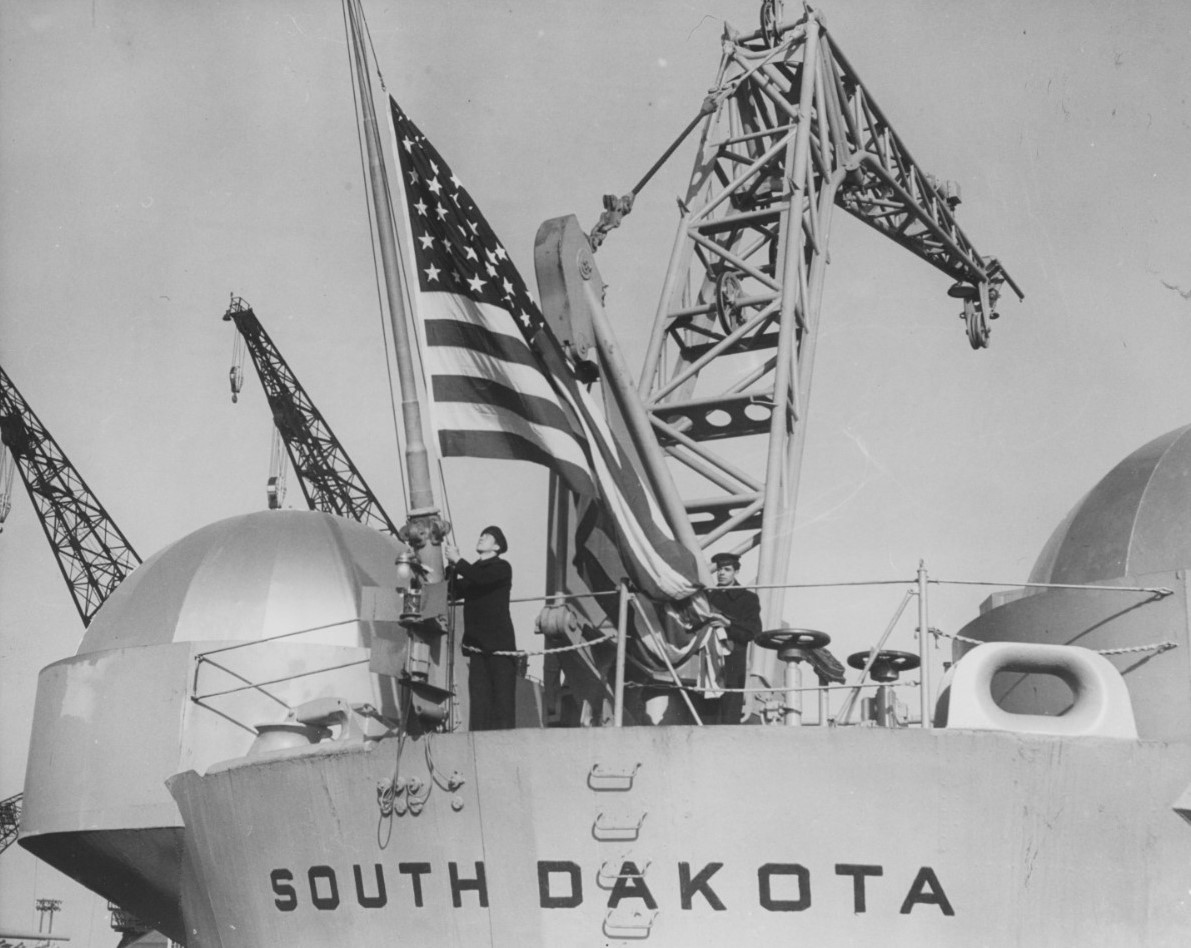
1 June 1962
SOUTH DAKOTA was stricken from the Navy list.
25 October 1962
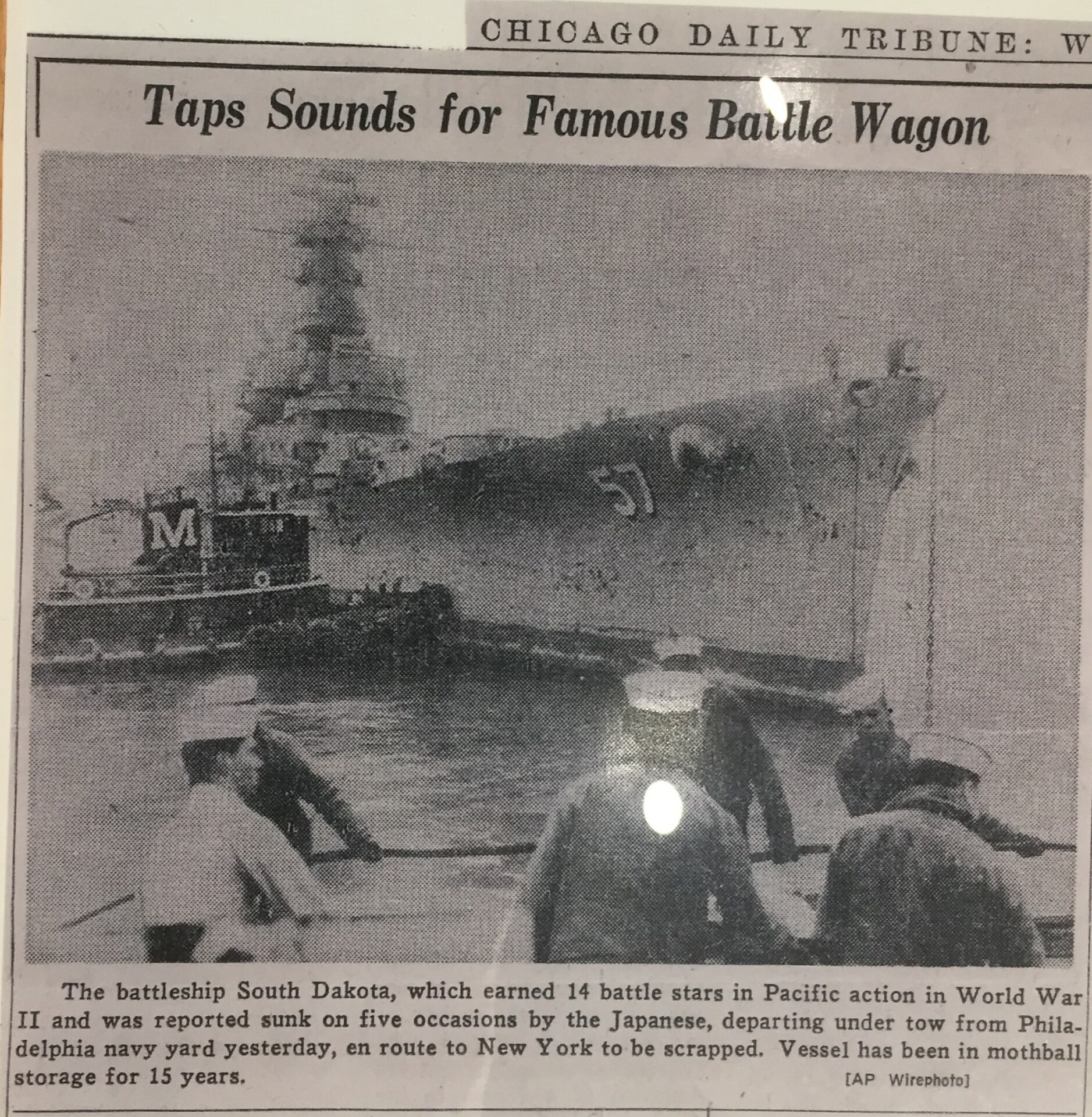
7 September 1969
Battleship South Dakota Memorial was dedicated in Sioux Falls, South Dakota. Vera Bushfield, who had christened USS SOUTH DAKOTA in 1941, lit an eternal flame to her memory and in honor of her crew.
Primary sources
USS South Dakota: The Story of ‘Battleship X’ by Paul Stillwell, 1972.
“South Dakota (BB-57) II 1941-1942” by Mark L. Evans, Naval History and Heritage Command, Jan 10, 2013. https://www.history.navy.mil/content/history/nhhc/research/histories/ship-histories/danfs/s/south-dakota-ii-bb57-1941-42.html
“South Dakota (BB-57) 1943-44” by Mark L. Evans, Naval History and Heritage Command, Jan 10, 2013. https://www.history.navy.mil/content/history/nhhc/research/histories/ship-histories/danfs/s/south-dakota-ii-bb57-1943-44.html
“South Dakota II (BB-57) 30 December 1944–7 September 1969” by Mark L. Evans, Naval History and Heritage Command, 4 June 2019. https://www.history.navy.mil/content/history/nhhc/research/histories/ship-histories/danfs/s/south-dakota-ii–bb-57–chapter-3-19451969.html


